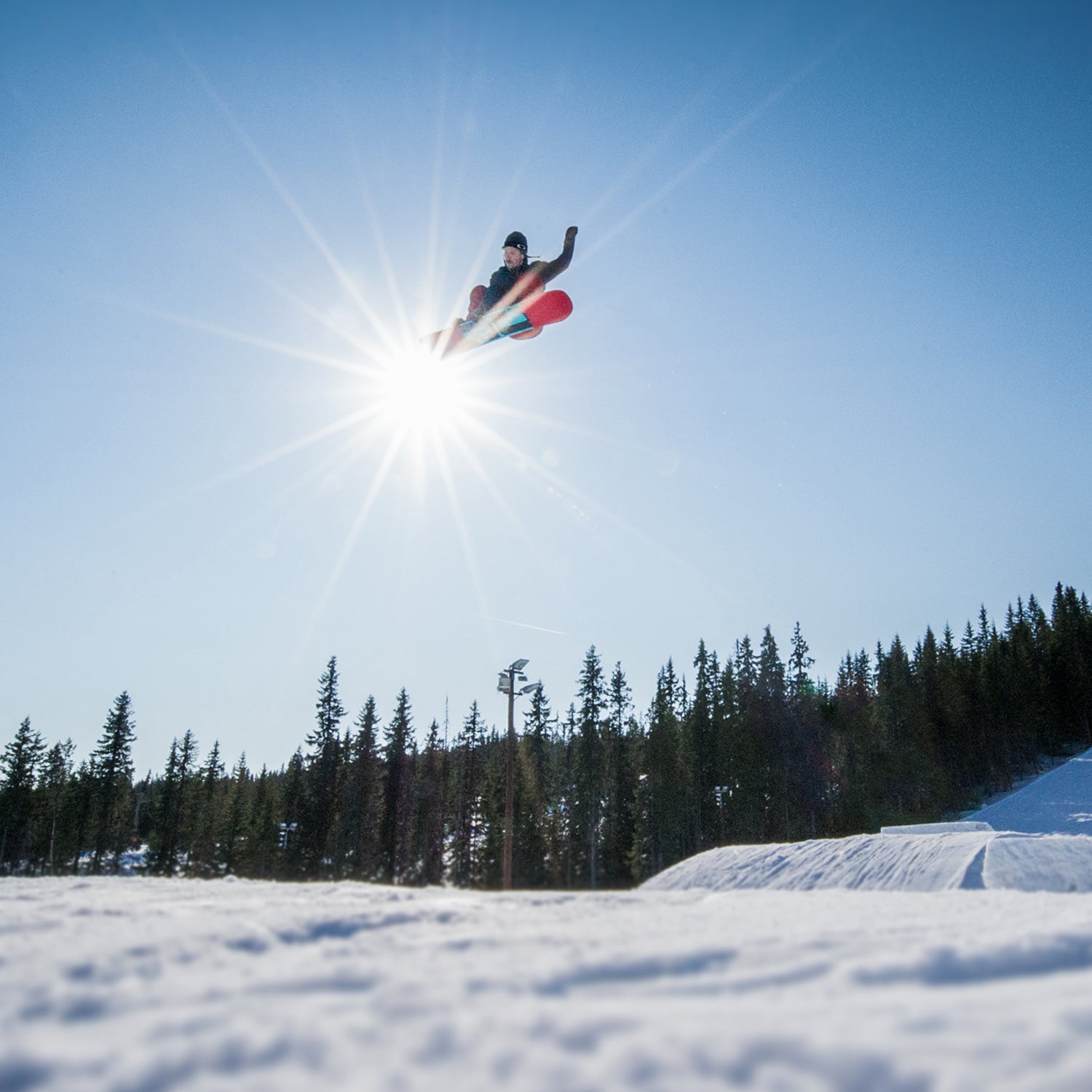Much like the craft beer movement, new independent ski and snowboard makers are cropping up every year, turning out interesting, well-made planks that chip away at the hegemony of the major corporate-owned manufacturers.
Website catalogues an amazing 348 different ski brands worldwide—not counting snowboard makers. According to the site’s editor Eric Edelstein, the production of those brands range from 10,000 pairs a year to “a guy in his garage turning out a handful of skis.”
Like the microbrew movement, says Edelstein, it’s a return to the way things once were. “In the old days,” he says, “every European mountain village would have a ski maker whose ski reflected local conditions.” Similarly, the modern independents can get more specific with design, or take more risks, knowing they’ll find a matching customer somewhere on the Internet. That’s not to mention the custom ski makers, who will dial in the skis and boards to your exact height, weight, and whim.
Another bonus of the rise of the independents is an increase in quality: small manufacturers can’t afford to replace batches of poorly made, broken skis so they generally build each pair with a great deal of care.
Here’s a handful of our favorite indie ski makers, each building boards exclusively in the United States.
Rocky Mountain Underground
The durability of double-thick sidewalls, bases, and edges has led to meteoric growth for the company. Rocky Mountain Underground was founded in an (underground) garage in Breckenridge, Colorado, in 2009, and now turns out 3,000 pairs of skis per year in factories in Denver and Quebec. This year, by way of saying thanks, they’ve created a limited edition line of three models, from which proceeds will be donated to climate-change advocacy group .
Community Skis
This has become one of Mammoth, California’s most rootsy gathering spots, hosting monthly art shows, movie screenings, and art classes. They also make custom skis, with a mission of getting the rider as involved as possible. At a minimum, customers fill out a preference questionnaire to hone the design. At the other end of the spectrum, clients can build their own skis under the tutelage of the staff. Community has plans to spread the gospel of craft ski making by opening other Community brand shops in places like Telluride, Bend, and Chamonix, and hopes to help other independent entrepreneurs set up their own ski factories wherever they like.
Gilson Boards
Created to capitalize on two innovative design concepts, was founded by a pair of tinkering middle school teachers in Nashville, Tennessee. Eventually, Nick Gilson and Austin Royer moved their operation to central Pennsylvania, where Royer was raised, in order to secure patents and perfect prototypes. With both now in hand, Gilson Boards opened their snowboard factory this October to begin producing five different models, each featuring the signature technologies of RCR (raised central region) and soft edge.
RCR is based on the concept of catamaran boat hulls and the speed and acceleration advantages they have over mono-hulls—on hard snow (groomers, terrain parks), the board’s raised central region lessens contact with the snow surface and therefore reduces drag. In powder, the board floats traditionally. The second design technology, soft edge, is a two-tiered edge system where the traditional steel edge is raised off of the snow surface. This creates a “soft edge” for drifting and buttering turns and decreases the likelihood of violently catching an edge. The company will be demo-ing their boards at more than 40 resorts this winter.
Meier Skis
Downvalley from Aspen, Glenwood Springs, Colorado, is the home of as well as the resting place of Doc Holliday. The five-year-old ski maker takes a lot of its model names from the gunfighter’s contemporaries. Think: Wild Bill and Calamity Jane.
More central to its identity, though, is the concept of locally sourced wood. The pine beetle epidemic has massacred vast swathes of Colorado conifer, leaving significant fire hazard in its wake. Meir does its part to help reduce that threat by using as much of the blue-tinged beetle killed lumber as possible—about 20 percent of each ski’s core. The remaining wood is Colorado aspen. The company uses clear topsheets, making the wood visible, to emphasize the local ingredients. Their sidewalls are also made of recycled ABS and their bonding resin is made from pine oil and recycled vegetable oil. This year the five-employee outfit will produce about 600 pairs, spread across 10 models in 27 different sizes, each at prices competitive with those built overseas by the majors.
Venture Snowboards
Founded in 1999, isn’t the new kid on the block, but we love their ethos. The factory is located at an elevation of 9,305 feet in the wild heart of big mountain riding—Silverton, Colorado—and is operated exclusively on wind and solar power. Their wood cores are made of sustainably harvested wood, and each model is offered as a splitboard option. In addition, the company’s Shape Shack turns out limited editions of experimental designs to tempt the most open-minded riders.
Wagner Custom Skis
Like Venture, has been around a while—since 2006—but no one has more practice turning out custom skis. In 2013, the Telluride-based company made 1,000 pairs, each with a full guarantee. Don’t like the boards? Wagner will build you a pair that you love for no additional charge, or give you a full refund.
Each design is generated by the company’s software, based on customer preference gleaned from an extensive questionnaire, and a database of virtually every commercial design going back more than a decade. They never rely on pre-cast molds. Every pair is unique, with a specialized shape, flex pattern, and ingredients. Wagner specializes in high-end materials like Kevlar and aircraft aluminum, though incorporating such stuff can push the price tag as high as $3,000.


